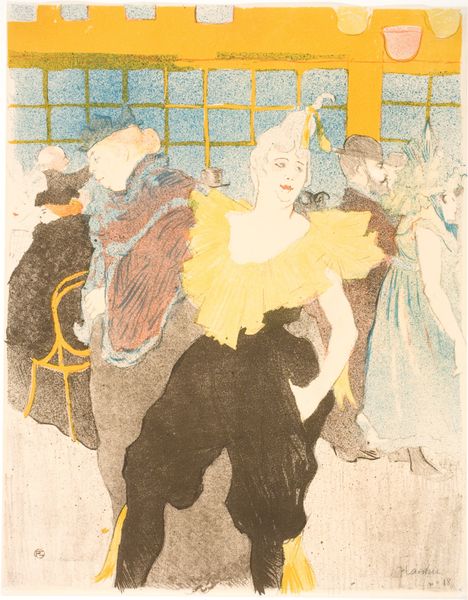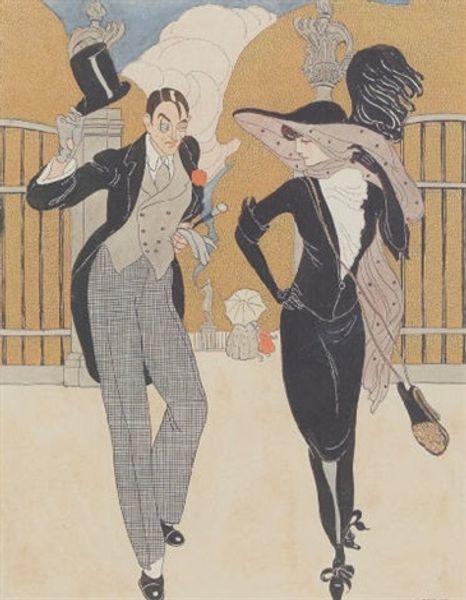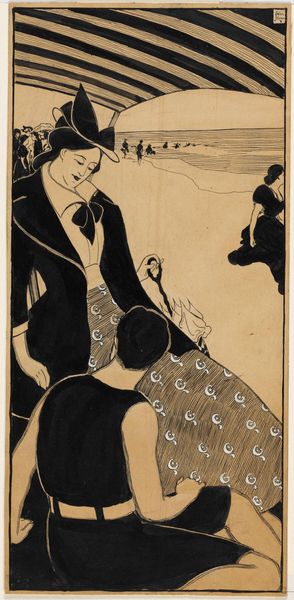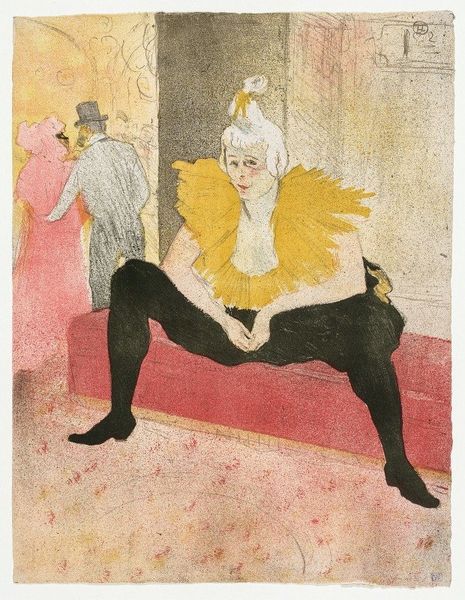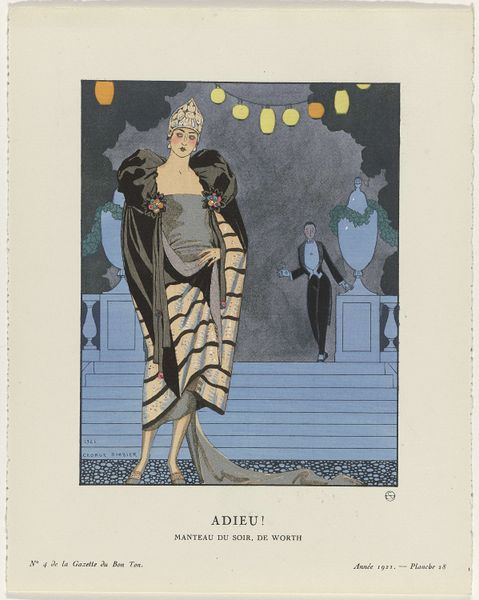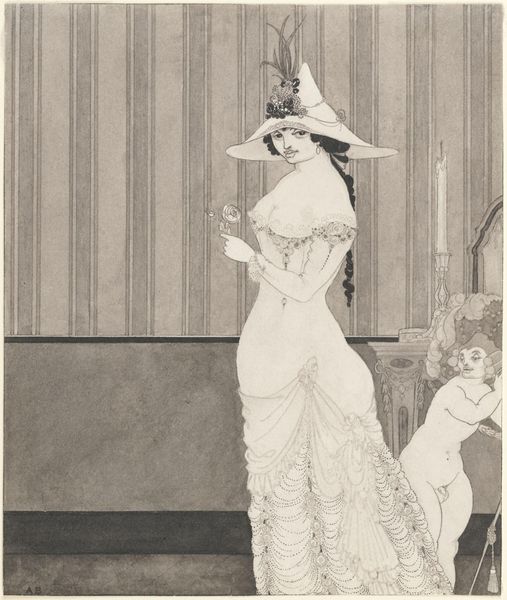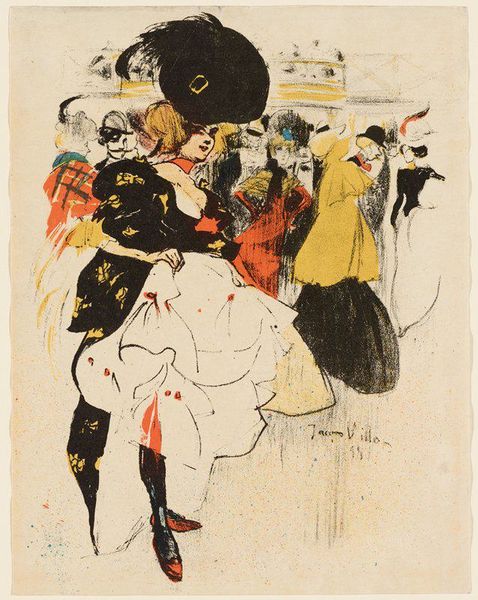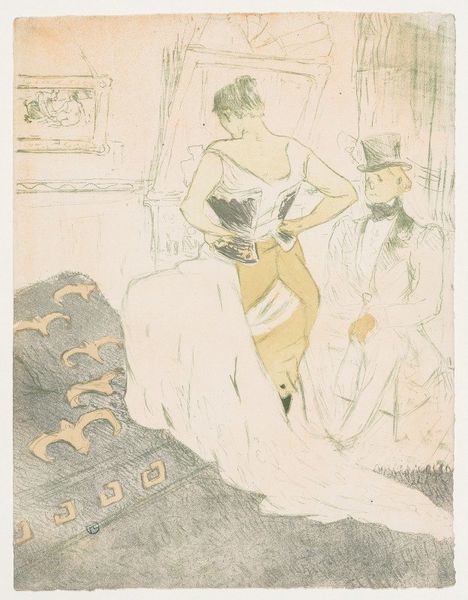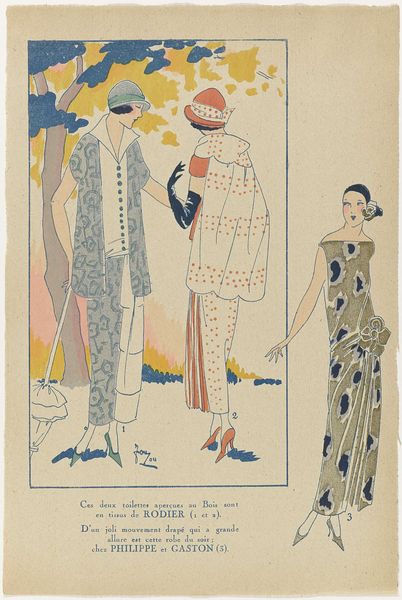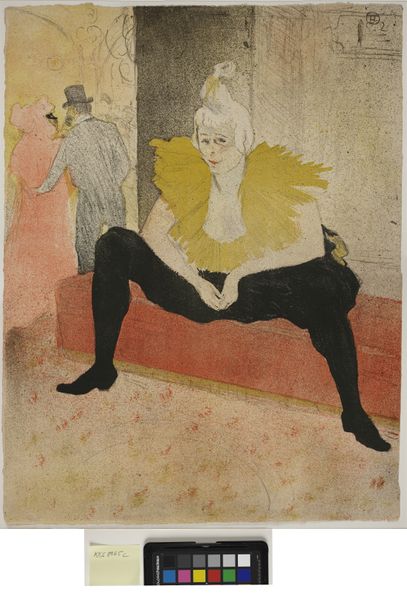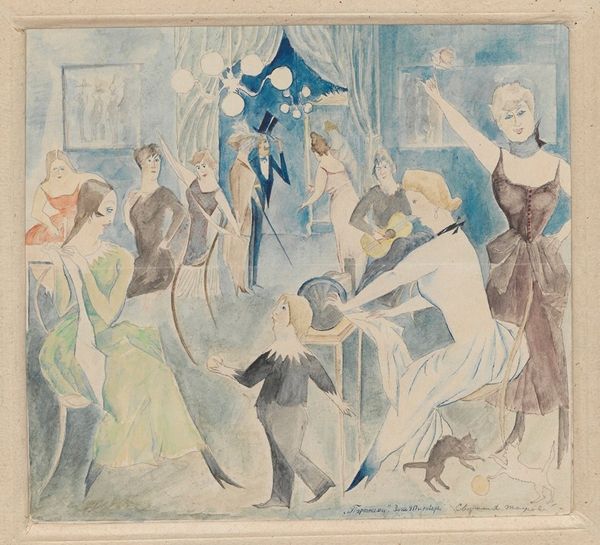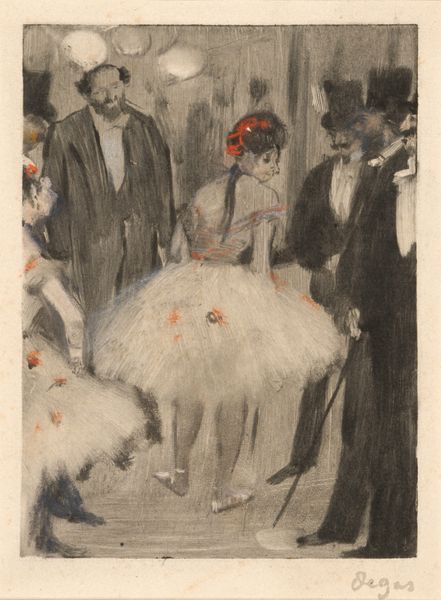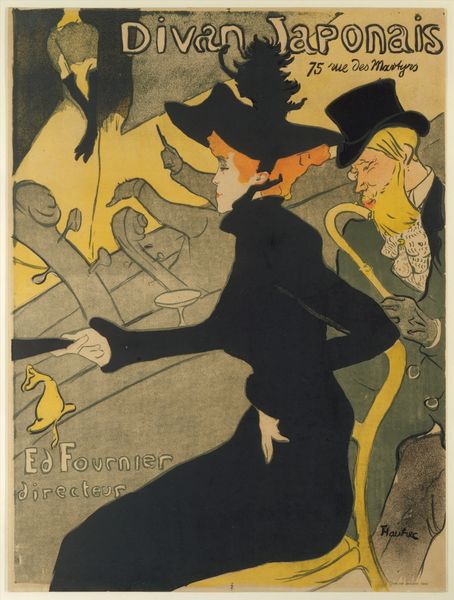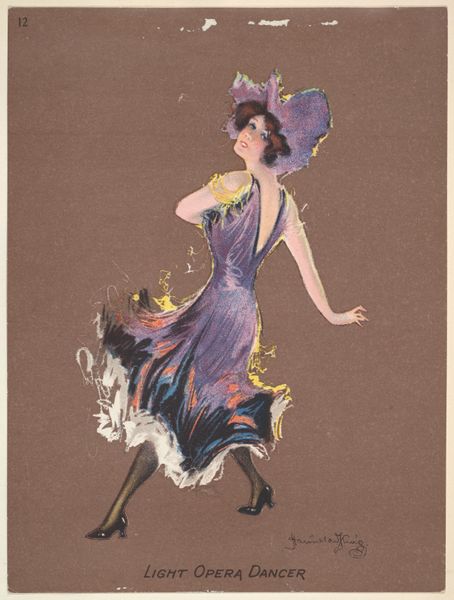
lithograph, painting, print, watercolor
#
portrait
#
art-nouveau
#
water colours
#
lithograph
#
painting
# print
#
watercolor
#
cityscape
#
genre-painting
#
post-impressionism
Copyright: Public Domain: Artvee
Henri de Toulouse-Lautrec made this color lithograph of a clownesse, or female clown, sometime in the 1890s in France. The clownesse was one of a series of prints entitled "Elles," meaning "they," and dedicated to the women, often performers, of Paris. Toulouse-Lautrec was fascinated by the popular entertainments of his day, like circuses and cabarets, but also by the social realities of Belle Époque Paris. We might consider this print in the context of the artist’s well-known interest in brothels and prostitutes. Was he interested in showing a more realistic image of working women? Or was he just attracted to the spectacle? These are hard questions, but ones we can begin to answer by looking into the visual codes, historical associations, and cultural references of the art. We can turn to archival sources, like newspaper accounts and police reports, to uncover the social realities of the lives of women at this time. Through this kind of research, we can arrive at a better understanding of art as something firmly rooted in social and institutional context.
Comments
No comments
Be the first to comment and join the conversation on the ultimate creative platform.
